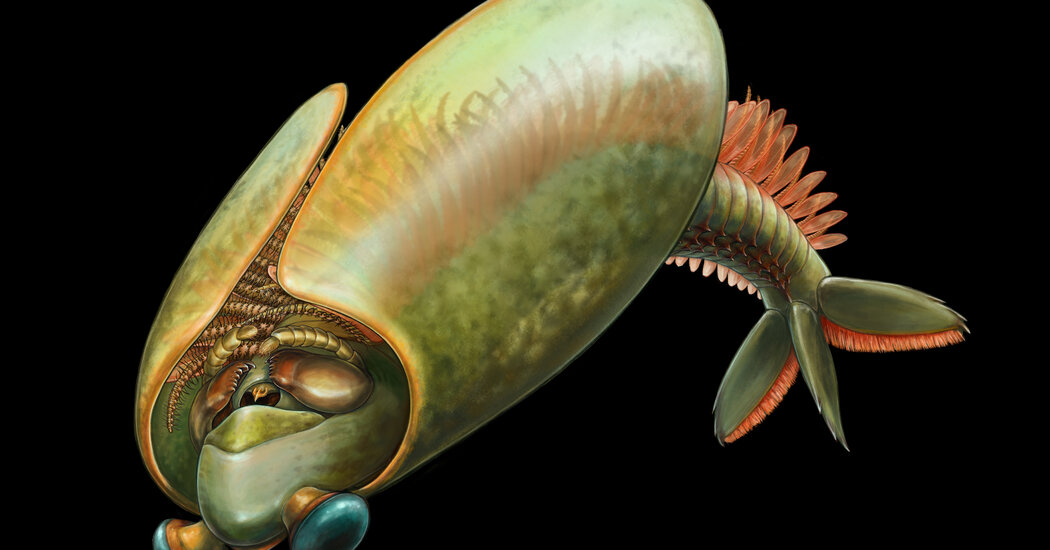An examination of an aquatic, shrimplike creatures that lived half a billion years ago offers insight into how arthropods with mandibles became so common.
About 70 percent of the animals on Earth — including centipedes and bees, shrimp and crabs — are arthropods with mandibles, or pincerlike jaws. To understand how organisms with this anatomical feature became so diverse and successful over the last 500 million years, scientists looked inside the taco-like shell that protected an enigmatic creature that once swam in prehistoric seas.
That creature, the arthropod Odaraia alata, roamed the shallow seas of the middle Cambrian Period approximately 508 million years ago. Sometimes compared by scientists to modern-day shrimp, Odaraia was nearly eight inches long, which was large for the time. Its unique hard covering, which may remind you of Taco Tuesday, most likely helped propel it through water, at times upside-down.
An analysis of fossils, published on Wednesday in the journal Proceedings of the Royal Society B, presents the first solid evidence that Odaraia had mandibles and probably collected food in the open ocean, not only near the seafloor. The study fills critical gaps in the evolutionary record of arthropods and the establishment of marine food webs.
Paleontologists have been puzzling over Odaraia for more than a century. They proposed, first in 1912 and later in 1981, that the sea bug could filter-feed with mandibles, as shrimp and barnacles do today. But the fossil evidence was inconclusive.
“Many things about Odaraia were still secret to us” even after the comprehensive 1981 analysis, said Alejandro Izquierdo López, a paleontologist who led the new study while at the University of Toronto.
Dr. Izquierdo-López measured and documented 150 previously unanalyzed Odaraia alata specimens from the collections at the Royal Ontario Museum. He selected 24 fossils with exceptional preservation for closer study, which yielded exquisite details about the animal’s head and legs. Such features rarely survive geologic burial, but the fossils were originally found in British Columbia, Canada, in the Burgess Shale, a rock formation with unusually high rates of high-quality preservation of soft body parts. Dr. Izquierdo López’s specimens were no exception.
